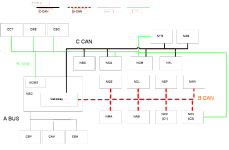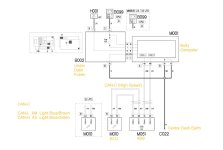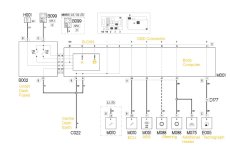Hi all
I am trying to fit an aftermarket cruise control, however this device refuses to initialise, saying it isn't recieving a CANBUS signal. I also have some other issues with the vehicle that suggest CANBUS problems.
It's a 2012 Ducato Maxi, 3.0lt with the comfortmatic gearbox. I have owned it for a year and a half.
I bought a cheap PC oscilloscope (Hantek 6022BE) and put it on CAN-H and CAN-L. I got a signal, but found that CAN-L was very low voltage at rest, like below 200mV. It should be around 2V I believe. So, I suspect this is what is causing my problems.
I suspect that I need to pull plugs off all the CANBUS trancievers (ECUs) in the van and keep checking to see if one of them is faulty, or if there is an issue with a specific wriing run.
Does anyone know how many of these devices there are, and where they are located? Any tips on troubleshooting this issue gratefully recieved...
I am trying to fit an aftermarket cruise control, however this device refuses to initialise, saying it isn't recieving a CANBUS signal. I also have some other issues with the vehicle that suggest CANBUS problems.
It's a 2012 Ducato Maxi, 3.0lt with the comfortmatic gearbox. I have owned it for a year and a half.
I bought a cheap PC oscilloscope (Hantek 6022BE) and put it on CAN-H and CAN-L. I got a signal, but found that CAN-L was very low voltage at rest, like below 200mV. It should be around 2V I believe. So, I suspect this is what is causing my problems.
I suspect that I need to pull plugs off all the CANBUS trancievers (ECUs) in the van and keep checking to see if one of them is faulty, or if there is an issue with a specific wriing run.
Does anyone know how many of these devices there are, and where they are located? Any tips on troubleshooting this issue gratefully recieved...






